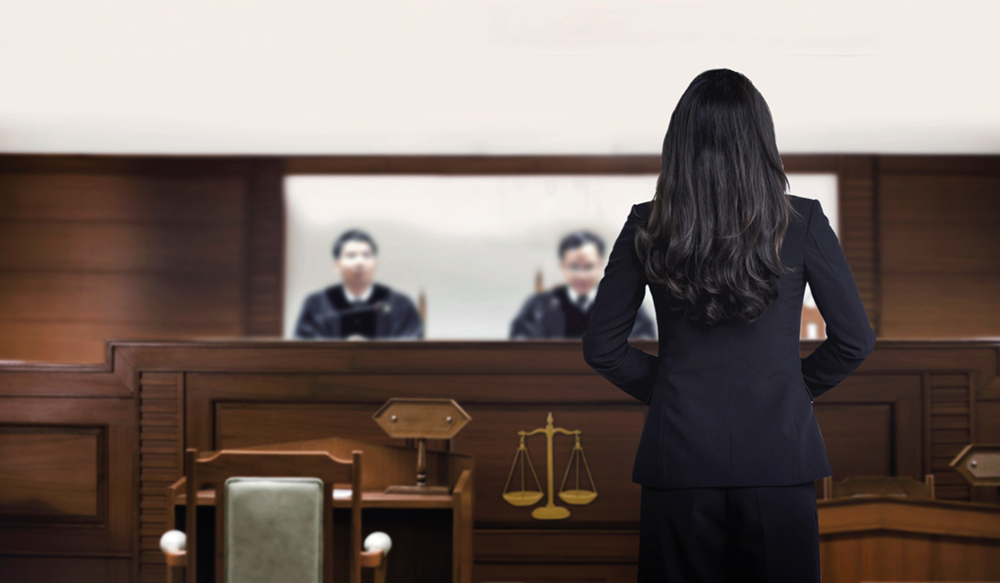Browsing the Complexities of Test Presentations: Tips for Seamless Shipment and Compelling Disagreements
In the realm of legal procedures, the art of trial discussion stands as a critical determinant of success. The complexities intrinsic in test discussions call for a fragile equilibrium of ability, strategy, and finesse.

Understanding Trial Goals
To properly navigate a trial, it is vital to have a clear understanding of the purposes that need to be accomplished. Prior to entering the courtroom, legal teams need to specify their objectives and wanted outcomes. These objectives act as assisting concepts throughout the test, forming approaches and affecting decision-making processes.
Understanding trial goals includes a detailed evaluation of the instance, lawful criteria, and the customer's ideal passions. Trial Presentations. It calls for a meticulous examination of the facts, identifying key issues, and anticipating potential challenges. By setting specific and measurable objectives, lawyers can customize their presentations and arguments to align with the desired outcomes
In addition, a clear grip of test goals enables legal groups to focus on evidence, witnesses, and legal arguments properly. It enables the advancement of a meaningful narrative that reverberates with the discretionary, strengthening the total instance presentation.

Organizing Evidence Effectively
Having a clear understanding of trial purposes lays the structure for arranging evidence effectively in lawful process - Trial Presentations. By lining up the presentation of evidence with the wanted end results of the trial, legal groups can reinforce their disagreements and enhance their persuasiveness. One crucial facet of arranging evidence is classification. Grouping proof based upon motifs or importance to specific legal components can assist improve the presentation and make intricate info much more absorbable for the judge or jury.
Another crucial element in arranging proof efficiently is establishing a sensible flow. Offering evidence in a sequential and systematic manner can aid develop a compelling story that supports the legal debates being made. Additionally, making use of visual aids such as charts, timelines, or graphes can better enhance the company of proof and assist in clearing up intricate relationships or series of occasions.
Furthermore, making sure that all proof presented is acceptable and pertinent to the situation is essential. Unimportant or inadmissible proof can interfere with the stamina of the disagreement and possibly damage the reliability of the here and now event. A published here careful evaluation and choice procedure must be taken on to consist of just the most legitimately audio and impactful proof in the test presentation.
Crafting Convincing Narratives
Crafting compelling stories plays an essential role in offering convincing arguments throughout legal process. When building a narrative for a test presentation, it is crucial to establish a clear story that highlights crucial factors and links them in a coherent way. By weaving together proof, statement, and legal arguments right into a cohesive and influential story, lawful professionals can effectively promote for their clients and boost the probability of a favorable end result in the courtroom.
Understanding Aesthetic Aids
Reliable use of visual help is essential to boosting the click to read influence and clarity of test presentations. Aesthetic help, when made use of strategically, have the power to simplify complicated details, reinforce essential factors, and leave a lasting perception on the discretionary. To understand visual aids in test discussions, it is essential to make sure that they are clear, succinct, and relevant to the arguments being made.
When integrating aesthetic help, such as graphes, timelines, pictures, or charts, into a trial presentation, it is important to maintain them aesthetically appealing yet specialist. The visuals should complement the verbal arguments, offering a visual representation of the information being talked about without overwhelming the audience with unnecessary details.
Furthermore, experimenting the visual aids beforehand is necessary to make certain a smooth distribution throughout the trial. Familiarizing oneself with the content, transitions, and timings of each visual help can assist preserve the flow of the presentation and avoid find more information technical problems that might develop.
Providing Impactful Closing Disagreements
An engaging closing argument offers as the culmination of a test presentation, enveloping the core narrative and convincing the judge and court towards a positive decision. Begin by detailing the main disagreements that support your client's placement, highlighting why the proof presented throughout the test supports your narrative.
In addition, integrating psychological appeal can additionally strengthen your closing disagreement. By attaching and humanizing the case on an individual degree with the decision-makers, you can evoke empathy and understanding, affecting their perception of the truths offered. Additionally, restating the lawful criteria that should be satisfied for a desirable ruling can strengthen the legitimacy of your placement. Ultimately, a well-crafted closing disagreement must leave a lasting impression, compelling the court and court to regulation in your customer's favor.
Final Thought
In final thought, grasping test discussions includes recognizing purposes, arranging proof, crafting stories, making use of aesthetic help, and providing impactful closing disagreements. By carrying out these methods properly, legal representatives can offer their instance perfectly and make compelling debates in the court. It is crucial to navigate the complexities of test presentations with accuracy and ability to attain success in lawful procedures.
By aligning the presentation of proof with the desired outcomes of the trial, legal teams can enhance their debates and boost their persuasiveness (Trial Presentations). To master aesthetic aids in trial presentations, it is critical to guarantee that they are clear, succinct, and relevant to the arguments being made
An engaging closing disagreement serves as the end result of a trial discussion, enveloping the core narrative and convincing the judge and court in the direction of a beneficial decision. Begin by laying out the main disagreements that support your client's position, highlighting why the evidence provided throughout the test supports your narrative.In final thought, grasping test presentations entails comprehending purposes, arranging evidence, crafting narratives, making use of visual aids, and supplying impactful closing debates.